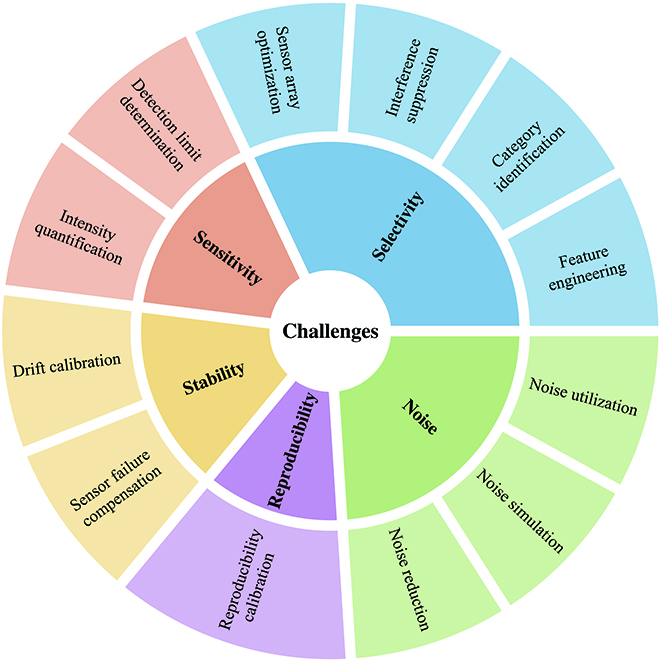| Apr 08, 2023 | |
How to make electronic noses smell better |
|
| (Nanowerk News) Imagine if you could ask a machine to “smell” something for you with just a click of a button. That’s what electronic noses, or e-noses, are for. They are systems that combine chemical gas sensors, signal processing and machine learning algorithms to mimic the sense of smell. E-noses can be used for many purposes, such as checking food quality, monitoring air pollution, diagnosing diseases and detecting explosives. | |
| How do they work? What are the challenges and opportunities in this field? A team led by Jingdong Chen of Northwestern Polytechnical University in Xi’an, China and Weiwei Wu of Xidian University in Xi’an, China have recently explored these questions in a comprehensive review of the methods and algorithms developed for e-noses. The review discusses the limitations of current gas sensors and provides an outlook on algorithm design. | |
| The review was published in Intelligent Computing ("Review on Algorithm Design in Electronic Noses: Challenges, Status, and Trends"). | |
 |
|
| Overview of methodology categorization. The text in the inner circle refers to the sensor limitations, and the text in the outer circle refers to the methods and algorithms that deal with those limitations. (Image: Taoping Liu et al) | |
| E-noses artificially mimic the biological sense of smell. The gas sensors of the e-noses correspond to biological olfactory receptor neurons. When you sniff something, tiny molecules float through the air and enter your nose. Similarly, a gas sensor can capture airborne molecules through an air intake system. The sensor reacts to these molecules and changes in a way that can be measured by electronic signals. These signals are then converted from an analog format to a digital format so that computers can use algorithms to analyze and interpret the data. | |
| The review summarizes existing methods and algorithms in the field of e-noses, grouping them according to a classification framework that highlights the challenges presented by the following limitations of gas sensors: | |
|
|
|
| Despite the significant progress made in the last few decades, the large-scale deployment of e-noses in practical applications still has a long way to go. | |
| The authors of the review believe that ensuring the robustness of e-nose systems should be a top priority for future research and development. While odor identification and intensity quantification have been widely investigated, there are several crucial tasks that demand greater attention. These include interference suppression and recognition, optimization of sensor arrays, detection of sensor drift and failure, noise reduction and utilization, and determining the limit of detection, among others. In addition, they say it is important to delve into the fundamental mathematical model of the sensing mechanisms, which is the foundation for solving many issues related to e-noses. |
| Source: Intelligent Computing (Note: Content may be edited for style and length) |
We curated a list with the (what we think) 10 best robotics and AI podcasts – check them out!
Also check out our Smartworlder section with articles on smart tech, AI and more.

